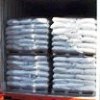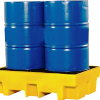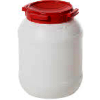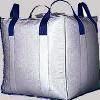Pure Formaldehyde Solution Commercial Pure n BP Ph Eur USP Grade Manufacturers Suppliers, India
Anmol Chemicals are manufacturers of Specialty Chemicals and Pharmaceutical Excipients, in India. Anmol Chemicals Group has manufacturing facilities spread across India, representatives in Houston Chicago USA and toll manufacturers in China. We make IP, BP, USP, Ph Eur, FCC or Food Grade, ACS, AR or Analytical Reagent Grade, LR or Laboratory Reagent Grade and Pure Grades of various chemicals. All our items are analyzed to meet the required standards.
Our manufacturing facility is FDA GMP approved and ISO-9001, ISO 14000, OHSAS 18000, ISO 22000, FSSAI HACCP certified. We are offering products manufactured as per Kosher and Halal approved method. We are registered with "Reach" for export to European countries.
CAS No.: 50-00-0, Molecular Weight: 30.03, Chemical Formula: HCHO
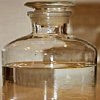
Formaldehyde is a naturally occurring organic compound with the formula CH2O (H-CHO). It is the simplest of the aldehydes (R-CHO) and is also known by its systematic name methanal. The common name of this substance comes from its similarity and relation to formic acid.
Formaldehyde Solution USP
CH2O 30.03
Formaldehyde [50-00-0].
Formaldehyde Solution in bulk containers contains not less than 37.0 percent, by weight, of formaldehyde (CH2O), with methanol added to prevent polymerization. Formaldehyde Solution in small containers (4 liters or less) contains not less than 36.5 percent, by weight, of formaldehyde (CH2O), with methanol present to prevent polymerization.
Packaging and storage: Preserve in tight containers, and preferably store at a temperature not below 15C.
Labeling: The label of bulk containers of the Solution directs the drug repackager to demonstrate compliance with the USP Assay limit for formaldehyde of not less than 37.0%, by weight, immediately prior to repackaging.
Identification:
A: Dilute 2 mL with 10 mL of water in a test tube, and add 1 mL of silver-ammonia-nitrate: metallic silver is produced either in the form of a finely divided, gray precipitate, or as a bright, metallic mirror on the sides of the test tube.
B: Add 2 drops to 5 mL of sulfuric acid in which about 20 mg of salicylic acid has been dissolved, and warm the liquid very gently: a permanent, deep-red color appears.
Methanol: To pass the test: 9.0 per cent V/V to 15.0 per cent V/V.
Assay: Transfer about 3 mL of Solution to a tared flask containing 10 mL of water, insert the stopper in the flask tightly, and accurately determine the weight of the Solution taken. Slowly and quantitatively add a mixture of 50.0 mL of 1 N sodium hydroxide and 50 mL of hydrogen peroxide that has been previously neutralized to bromothymol blue with 1 N sodium hydroxide. Heat the contents of the flask cautiously on a steam bath for 15 minutes, shaking it occasionally with a rotary motion. Allow the mixture to cool, rinse the funnel and the inner wall of the flask with water, and after allowing it to stand for 30 minutes, add 2 to 5 drops of bromothymol blue and titrate the excess alkali with 1 N sulfuric acid. Perform a blank determination (see Residual Titrations under Titrimetry). Also make a correction based upon the acidity found in the test for Acidity. Each mL of 1 N sodium hydroxide is equivalent to 30.03 mg of CH2O.
Formaldehyde Solution BP
Formalin
Formaldehyde Solution (35 per cent), Ph Eur
CH2O -- 30.03 -- 50-00-0
Action and use: When suitably diluted, used in the treatment of warts.
DEFINITION
Content: 34.5 per cent m/m to 38.0 per cent m/m of formaldehyde (CH2O; Mr 30.03). It contains methanol as stabiliser.
CHARACTERS
Appearance: Clear, colourless liquid.
Solubility: Miscible with water and with ethanol (96 per cent). It may be cloudy after storage.
IDENTIFICATION
A. Dilute 1 ml of solution S (see Tests) to 10 ml with water. To 0.05 ml of the solution add 1 ml of a 15 g/l solution of chromotropic acid sodium salt, 2 ml of water and 8 ml of sulphuric acid. A violet-blue or violet-red colour develops within 5 min.
B. To 0.1 ml of solution S add 10 ml of water. Add 2 ml of a 10 g/l solution of phenylhydrazine hydrochloride, prepared immediately before use, 1 ml of potassium ferricyanide solution and 5 ml of hydrochloric acid. An intense red colour is formed.
C. Mix 0.5 ml with 2 ml of water and 2 ml of silver nitrate solution in a test-tube. Add dilute ammonia until slightly alkaline. Heat on a water-bath. A grey precipitate or a silver mirror is formed.
D. It complies with the limits of the assay.
TESTS
Solution S: Dilute 10 ml, filtered if necessary, to 50 ml with carbon dioxide-free water.
Appearance of solution: Solution S is colourless.
Acidity: To 10 ml of solution S add 1 ml of phenolphthalein solution. Not more than 0.4 ml of 0.1 M sodium hydroxide is required to change the colour of the indicator to red.
Methanol: To pass Gas chromatography. 9.0 per cent V/V to 15.0 per cent V/V.
Sulphated ash: Maximum 0.1 per cent, determined on 1.0 g.
Manufacturers
ANMOL CHEMICALS
S-8, SARIFA MANSION, 2ND PRINCIPAL SHAIKH HASAN MARG, MUMBAI 400009, INDIA
TEL: (OFF) 91-22-23726950, 23774610, 23723564. FAX: 91-22-23728264
e-mail: info@anmol.org
Copyright and Usual Disclaimer is Applicable
Exporters to USA, UAE, Europe, South Africa, Tanzania, Kenya, Egypt, Turkey, Nigeria, Uganda, Brazil, Chile, Argentina, Dubai etc.
Representatives in New York, Houston - Texas, Chicago - Illinois, Los Angeles.
Fast Selling IP BP USP ACS FCC Food Grades of Chemicals by Anmol Chemicals
Aluminium Magnesium Silicate or Magnesium Aluminum Silicate
Aluminum Chlorohydrate ----- Dihydroxyaluminum Sodium Carbonate
Aluminum Chloride ---------- Ammonium Sulfate ----- Ammonium Persulfate
Aluminum Potassium Sulfate - Ammonium Chloride ---- Ammonium Bicarbonate
Ammonium Carbonate --------- Benzyl Alcohol ------- Boric Acid
Benzoic Acid --------------- Borax; Sodium Borate - Benzoyl Peroxide
Calcium Chloride
Calcium Hydroxide ---------- Calcium Acetate ------ Calcium Butyrate
Calcium Lactobionate ------- Calcium Levulinate --- Calcium Saccharate
Carbamide Peroxide --------- Citric Acid ---------- Calcium Phosphate
Calcium Oxide -------------- Calcium Sulfate ------ Chromic Chloride
Cupric Chloride ------------ Ferric Chloride ------ Ferric Nitrate -------
Formaldehyde Solution ------ Fumaric Acid
Gentian Violet ------------- Glacial Acetic Acid
Lactobionic Acid ----------- Magnesium Butyrate
Magnesium Oxide ------------ Magnesium Chloride --- Magnesium Sulfate
Malic Acid ----------------- Maleic Acid ---------- Manganese Chloride
Manganese Sulfate ---------- Methylene Blue ------- Oleic Acid
Octyldodecanol -------------
Propylene Carbonate -------- Potassium Acetate ---- Potassium Carbonate
Potassium Hydroxide -------- Potassium Chloride --- Potassium Phosphate
Potassium Bitartrate ------- Propylene Carbonate -- Selenious acid
Sodium Molybdate ----------- Sodium Perborate ----- Sodium Phosphate
Sodium Propionate ---------- Sodium Acetate ------- Sodium Bicarbonate
Sodium Hydroxide ----------- Sodium Chloride ------ Sodium Thiosulfate
Sodium Selenite ------------ Taurine -------------- Urea
Vanadyl Sulfate ------------ Zinc Chloride
Other Best Selling Products
Ammonium Bromide ----------- Ammonium Phosphate --- Barium Chloride
Butylated Hydroxyanisole --- Butylated Hydroxytoluene
Calcium Nitrate Nitrite ---- Calcium Propionate --- Copper Sulfate
Ceric Ammonium Nitrate ----- Cinnamaldehyde ------- Isatoic Anhydride
Directly Compressible Calcium Carbonate ----------- Encapsulated Citric Acid
Encapsulated Fumaric Acid -- Encapsulated Sodium Bicarbonate -
Encapsulated Sorbic Acid
Potassium Bromide ---------- Potassium Iodide ----- Potassium Nitrate Nitrite
Sodium Bromate ------------- Skatole -------------- Sodium Butyrate
Sodium Nitrite & Nitrate --- Sodium Bromide ------- Sodium Diacetate
Sodium Formaldehyde Bisulfite Strontium Chloride -- Stannous Chloride
TBHQ Tertiary Butylhydroquinone
Formaldehyde Solution
Commercial Pure & USP BP Ph Eur Grade








